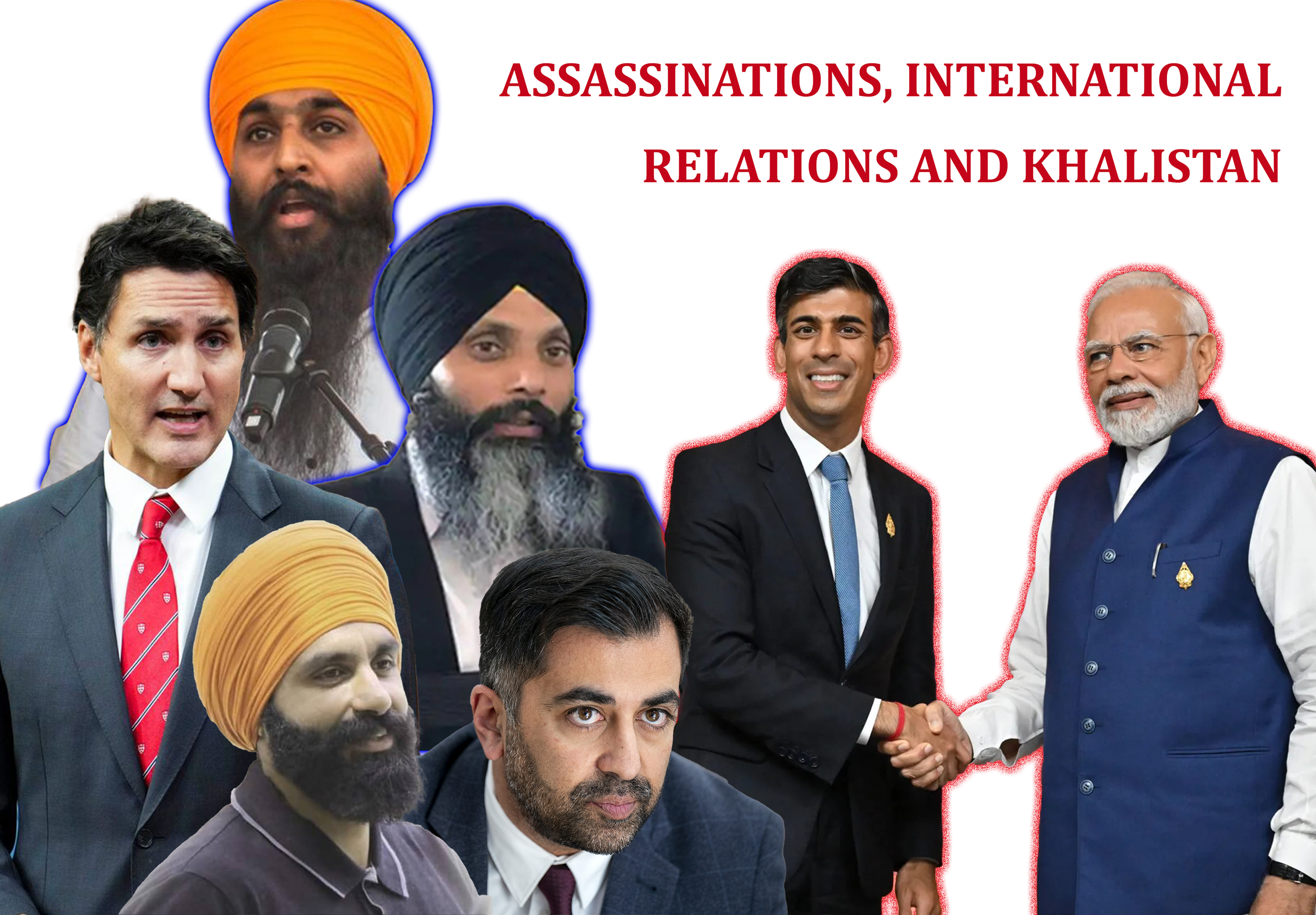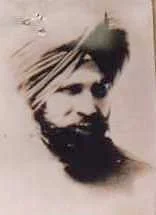Punjab Farmers Morcha and Khalistan
/Hundreds of thousands of Sikh farmers and their families, including women and children of all ages, have mobilised in perhaps one of the largest movements we’ve seen this century.
Over the past week, footage from the ground has shown Sikhs from Panjab overcome police barricades, water cannons, tear gas cannisters, lathi charges, and police brutality, to reach the borders of Delhi,
The agitation has gathered support from farmers in the state of Haryana, and is high spirits. They have set up makeshift camps, using their own tractors, trolleys, and trucks, with more supporters said to be on route. They are serving Langar to all and singing Gurbani, with one common message: “we will not leave without victory”.
Water canons fired by Indian authorities
Prominent Panjabi singers, such as Kanwar Grewal, Jass Bajwa, Harf Cheema, Ranjit Bawa, Rajvir Jawanda and Pamma Dumewal have not only written new songs of defiance, that have hit millions of views worldwide, but they are singing them amongst the masses, as active participants in this movement. Sikhs in Australia, America, Canada and Europe have stood in solidarity with the farmers; some expressing their support through art, poetry and music, whilst others have protested outside Indian embassies and written to members of parliament in their host countries.
Sikhs leading the movement.
Despite this, Indian media outlets have labelled this movement, which is built on decades of struggle for greater autonomy, as an act of “terror” and “extremism”, propagating their own narrative that demonises Sikh resistance. One term they continue to weaponise and malign is, Khalistan; the name Sikhs have given to their liberation struggle. Whilst Khalistan has not been at the forefront of the march, the ideals of Sikh sovereignty which it represents, have certainly inspired what the activists and speakers at the march have said, and done.
Lawyer turned activist, Deep Sidhu, a prominent speaker and favourite amongst the masses, continuously referred to ‘khudmukhtyari’ (autonomy) in the 3 months that preceded this movement. He declared time and time again, that the farmers’ issue goes beyond the 3 laws or the Minimum Support Price (MSP); the issue goes to the very heart of Panjab’s existence, to the existence of Panjabis and Sikhs as distinct peoples. The resistance did not start with the Indian Government’s move to privatise Panjab’s farming industry, rather it forms part of a larger struggle.
Moreover, the main source of inspiration for those who have stood up and marched to Delhi is rooted in feats from Sikh history. This fact has been proven time and time again not only by Deep Sidhu’s speeches and interviews, but also from others like Lakha Sidhana, another individual who has spoken with passion and principle about the wider struggle for freedom, to which the current agitation is tied. Interviews from farmers, students, children and elders in attendance, further supports this position, with constant comparisons drawn to the last time Sikhs marched to Delhi, under Sardar Baghel Singh in 1783, and took their rights.
Whenever the Sikhs of Panjab have risen up to stand for their rights, starting from the creation of the Indian state in 1947, the Indian state and its media outlets have consistently labelled Sikhs as criminals, troublemakers, extremists, and terrorists. There was an exponential rise in this anti-Sikh and anti-Panjab position following 1984, when the media began using ‘Khalistan’, as a synonym for ‘terrorism’ and ‘extremism’. Whilst Khalistan, by its very nature is a separatist movement, and rejects the notion of ‘Indian’ as a homogeneous identity, it is not, by any means a “terrorist” movement. There are many independence movements around the world, that are separatist and “anti-national”, by their very existence, but they are not then labelled as “terrorists” or “extremist” as Sikh resistance is, see the examples of advocates for independence in Scotland, Catalonia, and Palestine.
However, when it comes to Khalistan, Indian journalists, reporters, and TV anchors freely interchange the words ‘separatist’, with ‘extremist’ and ‘terrorist’, to demonise Sikh activism, in their attempt to nullify the Guru-inspired movement for sovereignty and vilify the entire Sikh community. The imposition of this hyper-Indian nationalist rhetoric causes many in the Sikh community to downplay, or even deny any expression of Sikh sovereignty that Khalistan represents.
The regurgitation of the state narrative that demonises Khalistan, either knowingly or unknowingly, not only distorts the legacy of thousands of Sikh martyrs, but also erases the distinct and obvious Gurmat infused resistance that is driving this movement, and helps to reaffirm the post-1947 notion of a homogeneous India. In many ways it creates another layer of state violence – what academics term ‘epistemic violence’. The consequences of this run deep into Sikh psyche, because Sikhs are constantly asked to justify sovereign Sikh actions in response to state violence. When Sikhs picked up arms to liberate Panjab in the 1980s, they were hunted down, tortured and killed by Indian security forces, and today the Indian state apparatus is violently suppressing the idea and discourse of liberation by calling Sikhs ‘terrorists’ and ‘extremists’.
Notwithstanding the complexities of trauma associated with the above, the clear driving force behind the current eruption in Punjab is the recent sovereign Sikh mobilisation and sacrifices. We have seen footage of Panjabis of all ages quoting lines from Sikh tradition; praising Sant Jarnail Singh ji Khalsa Bhindranwale; singing joyous songs about Jathedar Jagtar Singh Hawara; openly condemning and challenging the Indian Prime Minister; and declaring they are prepared to die for this struggle.
In recent days, Nihang Dals have also joined the Morcha stating they have arrived for the protection of the Sikh Sangat, in case RSS goons or paramilitary troops try to provoke the Sikhs. They ask for this matter to be resolved through diplomacy, citing Khalsa is always Nirvair – wishes no hurt upon anyone, but echoing the position taken by Sant Jarnail Singh, they also remind the Government in Delhi, that they stand with the people of Panjab and do not recognise any authority over the Khalsa Panth. They condemn the laws and ask Delhi to revoke them so the farmers can return to Panjab in a peaceful manner. Nihang Singhs declare they are ready to sacrifice everything and embrace martyrdom, if the matter continues to escalate.
We must take pro-active steps in the diaspora to ensure this integral, pro-Sikh sovereign element of the current movement is not drowned out by the Indian media’s demonisation of Sikh resistance, and in particular it’s demonisation of Khalistan. We need to be honest with ourselves, look at ways in which we, or those around us in the Sangat, may reinforce state narratives as a result of having internalised the trauma of decades of state violence. One way of doing that is understanding the context and reality of Khalistan, a sovereign Sikh country, as the only solution to resolve the conflict with India.
Kisaan Ekta Mazdoor Zindabaad
Khalistan Zindabad
For further essential reading please visit:
https://www.nsyf.org.uk/criminalising-dissent-report
www.khalistan.org/publications






